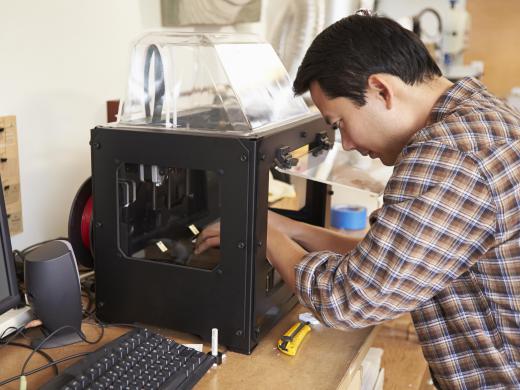Building prototype inventions can be the costliest and hardest part of developing inventions, but there are some ways to make the process a little easier. Building non-working prototype inventions may be useful, because they give the inventor an idea of whether the working prototypes or products will function correctly. Building prototypes can be very expensive, so looking for cheaper manufacturers or using technology that reduces costs may be helpful. If the inventor builds his own prototypes — at least the first one — then it should reduce costs and may help the inventor proceed with further prototypes and models. Purchasing parts is sometimes unavoidable, but an inventor can cut costs by trying to build his prototypes using parts he already has on hand.
Making working prototype inventions can be very expensive and, if the prototype is not good as a commercial product or too difficult to make, this can leave an inventor with a lot of debt. If an inventor creates a non-functional prototype to start with, this can help shape the prototype’s plan and can help the inventor know whether the prototype should go on to the next step in building. Using cheaper, though not shoddy, materials can make prototypes easier to construct and serve as a good stand-in for the real invention.

If an inventor can find a way to reduce costs from the onset, then making prototype inventions should be much easier. For example, if the inventor looks at many different manufacturers, then he may find one that will offer its services for less money. Using cheaper technology also may help with the prototype. While a plastic mold may be the ideal way to make a prototype, a three-dimensional (3D) printer can usually form a similar item, but the process should be much cheaper.
For first versions, an inventor should concentrate on making prototype inventions himself. This should show the inventor what parts are needed, which can help when choosing a manufacturer. Building the product at home normally reduces the costs.
When prototype inventions need custom parts, extra money and time are needed to build those parts, and those things make it harder to build a full prototype. Unless it is unavoidable, an inventor should try to make an invention that uses existing parts. If the original plans call for custom parts, then the inventor may be able to find a way to swap this out for existing parts by changing the plans a bit.
